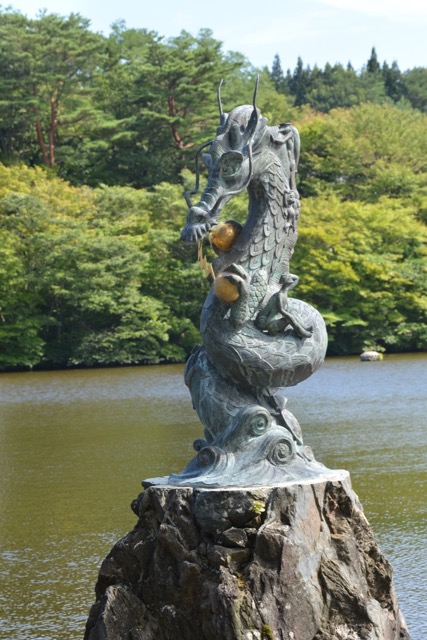Obon
13/08/19 08:16

Around the world there are many traditions and cultural observances that have some element of honoring the connection between those of us who are living and those who have died. We not only mourn the loss of those who have died, we sense some form of ongoing connection with them. Over the years I have frequently heard the comparison between Halloween and the Mexican observance Día de los Muertos, also known as Day of the Dead. This comparison is in part due to the layering of Roman Catholic Christian traditions on the holiday. In modern times it is observed on November 2, immediately following All Saints Day which follows All Hallows Eve or Halloween. Día de los Muertos, however is not the same as Halloween. It has its roots in much more ancient pre-Hispanic traditions. A thousand years ago, before colonization, indigenous people understood that death was a normal part of life and believed that those who had died continue to have connection with those who are living. Their spirits visited the living and this connection was to be celebrated with special ceremony and tradition. This ancient observance continues in the modern tradition even though the language and religion of the colonial powers has been superimposed upon the indigenous traditions. Knowing this, I think it might be a mistake to assume that Obon is a Japanese “Halloween.”
Obon, rather, is an ancient Japanese tradition that honors the spirits of the ancestors. Japan’s Shinto traditions are filled with observances of spirits and among the spirits that are a part of everyday life are the spirits of those who have gone before. Recognizing their presence and honoring them is the spirit of the holiday.
Before we realized that this is the week of Obon in Japan, we noticed that the hotel where we are staying was occupied by more children than had been the case in previous weeks. We are sharing our breakfast with families and children instead of a majority of business and military travelers. The change was dramatic enough that we began to look into the reason. Many Japanese people take vacation between August 13 and 15 to observe the festival. In modern Japan, travel is often part of the observances as people go back to their ancestral homes to join in the observances.
The first day of Obon focuses on preparation for a visit of the spirits of those who have died. Homes are cleaned and special foods are prepared. Gifts of fruit, rice, green tea, sake and some special lotus shaped sweets are prepared. Paper lanterns are put out to guide the spirits to the homes they occupied when the ancestors were living. After three days of observance, it is time for those who have died to return to their graves. Graveyards and gravestones are cleaned and decorated. Paper lanterns are lit to guide the spirits back to their resting places.
Obon is not a national holiday in Japan, but continues to be an important time and a time that many Japanese take time away from work to observe ancient traditions.
It might be more accurate to compare Obon to Memorial Day observances than to Halloween observances because of the emphasis on cleaning and decorating of graves. The truth, however, is that Obon is neither. It isn’t a version of any western tradition, but rather its own holiday.
Obon festivities include special regional dances and songs. Each part of Japan has a special song and dance that is offered as part of the traditional festivities. Flutes, drums and stringed instruments called shamisen are played. The song and dance is called bondori. It is a dance to welcome and honor the dead. Dancers move in a circle. In some communities a raised platform is constructed where musicians play their instruments. In other communities the dance is performed in the middle of the street.
In our family there is a connection between the deaths of loved ones and the birth of a new generation. My father died in the fall. The following spring our son was born. My mother died in the winter. The next month our first grandson was born. The births of new members of our family always brings to mind those who have died and the love that we shared when they were living. Since we are in Japan to greet a new grandson, it has been natural for us to speak of family members who have died. We feel the presence of their spirits in our celebrations of this new life. We remember their love and generosity and seek to honor them by loving and caring for this new gift of life in our midst. We know that the traditions of our family are passed from generation to generation and feel the presence of those who have died when we turn our attention to new life in our midst. It is natural for me to think how much my father enjoyed being a grandfather and meeting the grandchildren that he did meet. It is natural for me to think of my mother when we hand down the hand-knitted sweaters she made for other children to the newest child in our family. We feel their presence as we celebrate this new life.
Even though we don’t know the culture and traditions of Japan, we can understand a special time each year that is set aside for families, including children and elders, to gather and remember those who have died. Their spirits indeed are still present in our lives. Obon is a Japanese way of honoring that presence.